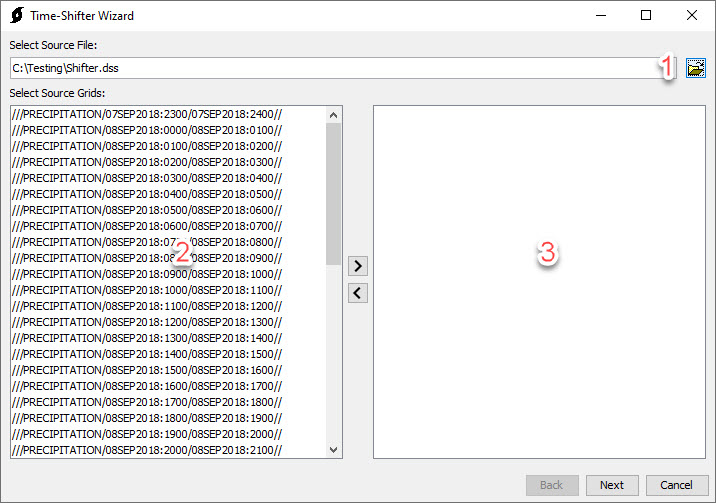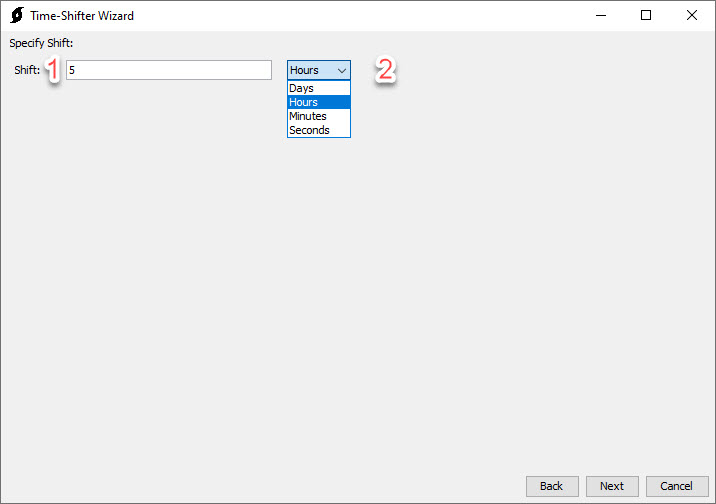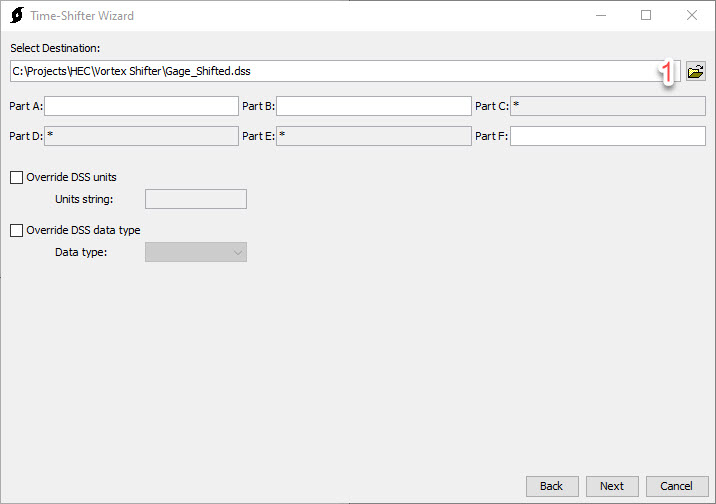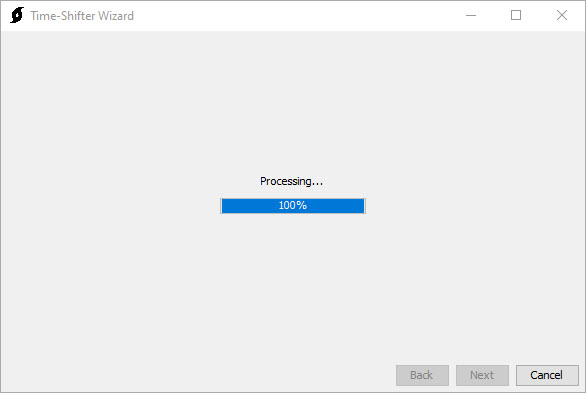Usage
The Time-Shifter utility is launched from the Tools | Data | Shifter menu in HEC-HMS.
A project does not have to be open to access the Time-Shifter.
Select a source grid file using the file browse button (1). When a source file is selected, its variables will be displayed in the available variables column (2). Variables can be moved from the available variables column to the selected variables column (2 to 3) by double-clicking the variable or using the arrows to move the selected variable.

At least one variable must be selected to proceed.
Step 2: Determine the Time-Shift
Determine the amount of time to shift the grid. (1). If the value chosen is positive then the grid will be shifted forward in time. If the value chosen is negative the grid will be shifted backward in time. (2) This dropdown allows the user to chose the unit of time for the time-shift. Options include Days, Hours, Minutes, or Seconds.

Step 3: Select Destination
The file browse button (1) can be used to browse to a destination file. If the destination file is HEC-DSS format, additional options are presented for specifying pathname parts. Some pathname parts can not be edited. These will be populated automatically.

Step 5: Processing
After Next has been selected on Step 4, a progress bar will display, indicating the progress of the import. When the progress reaches 100%, the Restart and Close buttons will be enabled and will replace the Back, Next, and Cancel buttons. The gridded data will be saved to the user selected DSS file (chosen in step 4). The user will need to create a gridded data object within the HEC-HMS project and link the object to one of the grid data records in the DSS file in order to use the gridded data within an HEC-HMS simulation.
